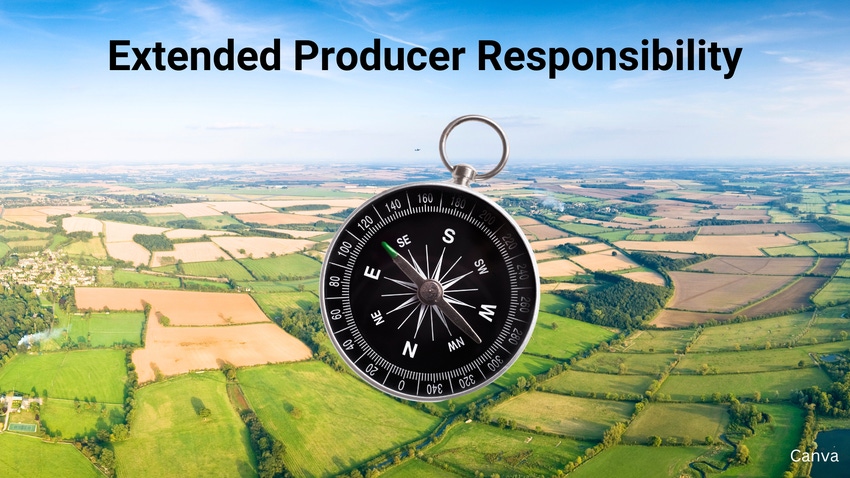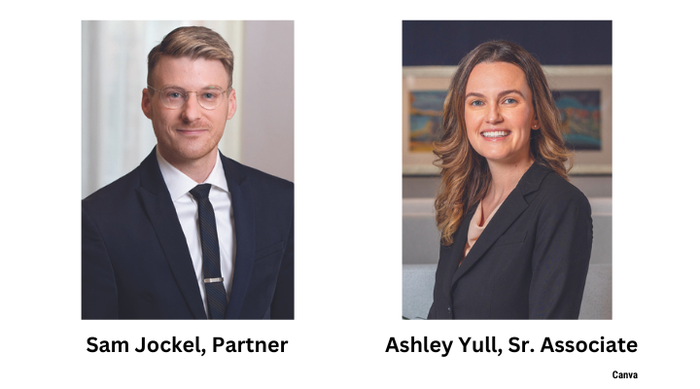Navigating EPR’s Patchwork Landscape
What should brand owners do about extended producer responsibility? Two legal experts unpack packaging issues affecting US companies.

At a Glance
- Brand owners face an increasingly complex maze of PCR content requirements and EPR legislation
- Increased scrutiny for food packaging chemicals of concern complicate things
- A patchwork of state requirements are a challenge, especially for brands selling products nationwide
Across America consumer packaged goods companies are facing an increasingly complex maze of scattered plastic bans and post-consumer recycled (PCR) content requirements.
Matters will only get murkier with traction accelerating in extended producer responsibility (EPR) legislation that places the packaging onus squarely on brand owners.
This potent regulatory combination poses problems for brand owners planning for the future, especially in food and beverage markets.
To address this trend, we sought the advice of Sam Jockel, partner in Alston & Bird’s Litigation & Trial Practice Group and member of the firm’s Food & Beverage Industry team. Jockel focuses his practice on regulatory, policy, and litigation matters across the food and beverage supply chain. He has experience with both the US Food & Drug Administration and US Department of Agriculture.
Jockel’s colleague Ashley Yull is one of the firm’s food packaging experts. She’s a senior associate who counsels clients in industries regulated by the FDA, USDA, and the Federal Trade Commission.
As background, please comment on regulatory driven packaging pressures placed on US food and beverage brand owners today.
Jockel: There has been a recent uptick in scrutiny of food packaging materials. On the regulatory side, states have enacted extended producer responsibility laws and minimum post-consumer recycled content requirements aimed at addressing the environmental impact of packaging — particularly single-use plastic packaging.
We’ve also seen several states pass laws restricting the use of various chemicals of concern in food packaging, including per- and polyfluoroalkyl substances, known as PFAS. This has created a patchwork of state requirements that are difficult to navigate — especially for brand owners that are selling product throughout the US. We’ve also seen the plaintiff’s bar challenge food and beverage products with packaging that allegedly contains PFAS or other substances of concern, which has created additional risk for brand owners.

CANVA
California is proactively moving forward on regulations that impact packaging and the brands that rely on these essential materials. Please share your perspective.
Jockel: This is the beauty of federalism, right? A patchwork of state requirements with some states, like California, placing greater restrictions on industry than others. As often the first mover, requirements imposed in California often trigger other states to follow, though that isn’t always the case.
For a brand owner marketing products in all 50 states — with likely a complex array of distribution networks—looking for a starting point to develop a compliance plan, I would advise looking to the most restrictive state first as the baseline to determine whether compliance with those state requirements is even possible.
What’s your view of the EPR landscape in the West and across the US?
Yull: EPR programs generally aim to fund recycling programs and encourage producers to design packaging materials that are more easily recyclable. However, the specifics of the proposed and passed EPR laws vary from state-to-state. This includes differences in the definitions of the covered producers and products, as well as the applicable exclusions. There are also differences in the financial structures, targets, enforcement provisions, and timelines for implementation of such programs.
We continue to track developments in EPR programs at the state level. It will be particularly important for brand owners to consider the timing for implementation of these programs and any applicable exceptions to the requirements.
The US is shaping up as a “state of regulatory EPR confusion” across the country, isn’t it?
Jockel: As just one example of the impact that this checkerboard or patchwork has on consumer understanding, the Federal Trade Commission’s Green Guides have long defined what it means to be “recyclable.” While the FTC announced it is undertaking a regulatory review of the Green Guides and therefore potentially changing what it means to be “recyclable,” California is currently working to implement SB 343, its “Truth in Recycling” law, where the state is taking its own stab at what it means to be “recyclable.”
Ultimately, we could see California disallow claims of recyclability that could arguably satisfy requirements in the Green Guides. Confusing, right?
Is EPR the best way to increase recycling rates in the US?
Yull: By shifting costs associated with food and beverage packaging waste to the producer, EPR programs are one way that states are trying to increase recycling rates and encourage use of more environmentally friendly packaging materials.
However, critics argue that the costs associated with such programs will ultimately be passed along to consumers and that some EPR programs remove control from local stakeholders, instead placing it in the hands of industry.
It remains to be seen whether EPR programs for packaging materials will be successfully implemented and have the intended impact in the United States.

Why are plastics the target of most EPR and packaging-related legislation?
Yull: While single-use plastic packaging that most food and beverage products are currently sold in has been the target of much of the legislative action at the state level, it can be challenging for brand owners to find replacement materials that replicate the same properties that caused plastic packaging to proliferate in the first place, things like versatility, durability, and cost.
What’s the state of bottle deposits in the US and do those programs work?
Yull: There are 10 states with existing bottle deposit laws, which vary in terms of the types of beverage containers covered and the redemption values. Currently, additional states are trying to pass bottle bills and some states with existing laws are trying to increase redemption values or expand the types of covered beverage containers. Brand owners should be tracking these developments and the potential impact on their portfolio of products.
States have touted bottle deposit programs as effective at increasing beverage container recycling rates and reducing beverage container litter. There are, however, criticisms of these programs, including expense to stakeholders and removal of revenues from some of the most valuable recycled material from curbside recycling programs.

What should brand owners be doing now about their packaging as it relates to these issues?
Jockel: Brand owners need to first gather insight into their packaging portfolio. This includes working closely with their packaging material suppliers to gain a complete understanding of their portfolio. This involves understanding the type of packaging being used, including whether any of it is recyclable, contains post-consumer recycled content, contains PFAS or other substances of concern, etc. Then, based on the packaging, brand owners should evaluate regulatory compliance challenges and consider any potential litigation risk impact.
Final thoughts?
Jockel: As state restrictions on food packaging and the litigation landscape continue to evolve, I suggest brand owners ensure they have someone at their company who is dedicated to this issue. Brand owners should track trends in the regulatory and litigation landscape to identify the types of packaging materials and applications of those packaging materials that pose the highest risk.
About the Author(s)
You May Also Like




